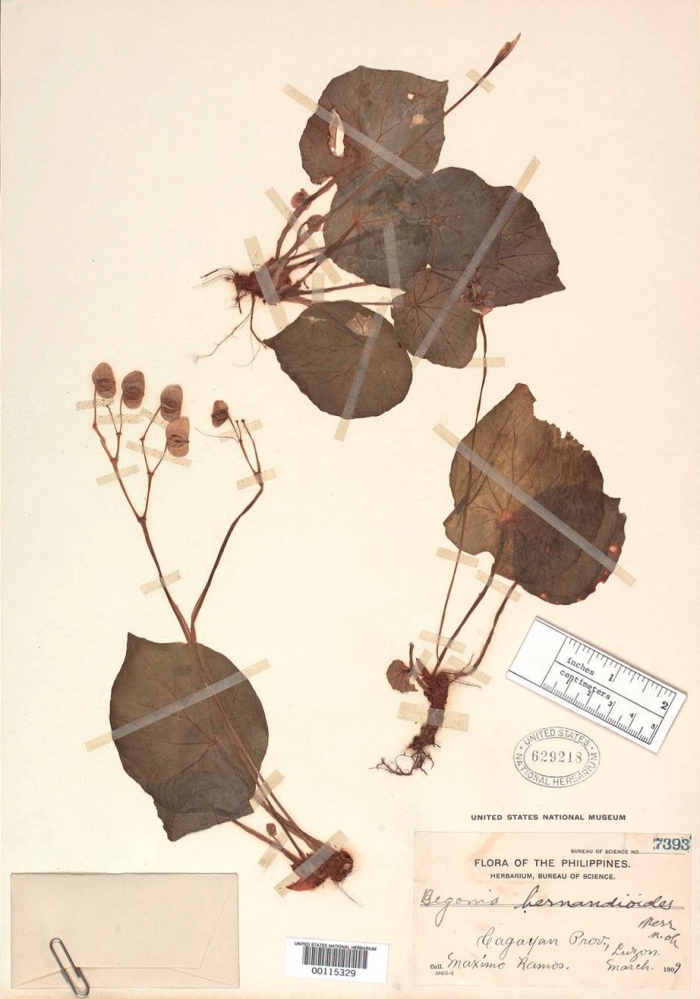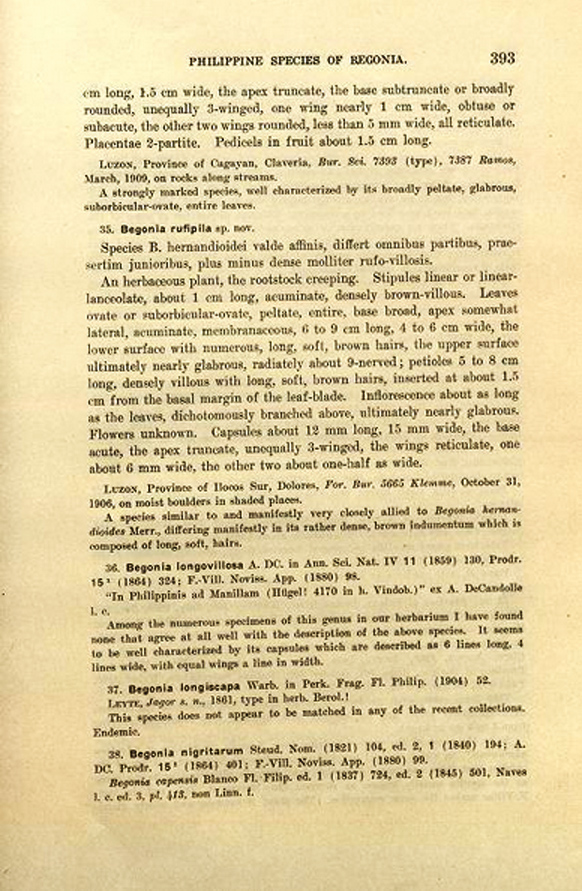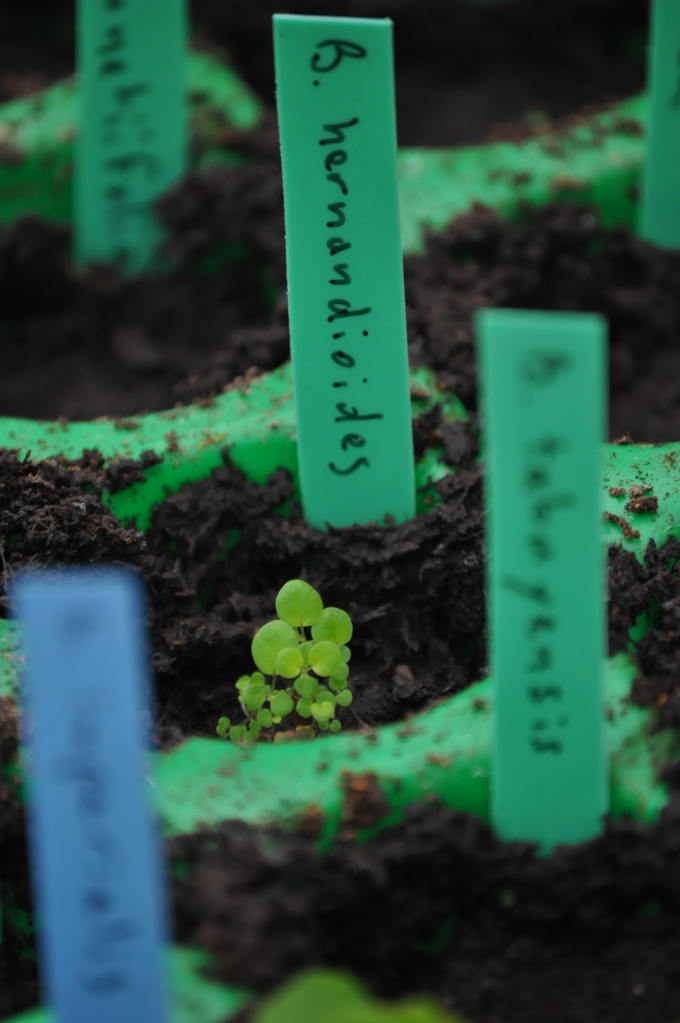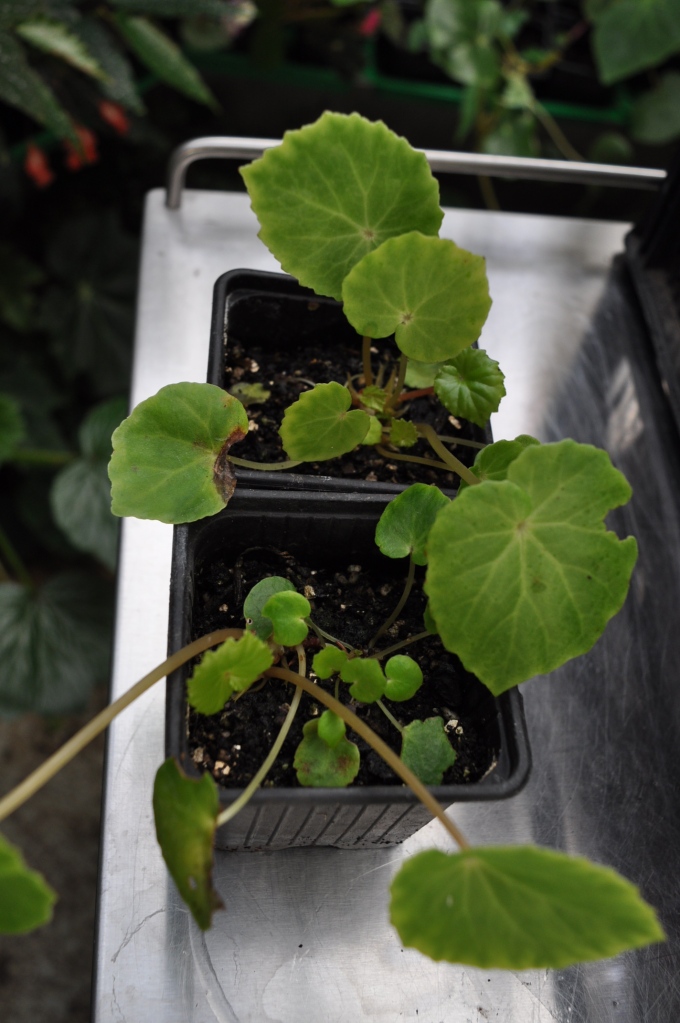Ce bégonia est originaire des Philippines où il a été découvert en Mars 1909 par Maximo Ramos près de Claveria, province de Cagayan sur l’île de Luzon, sur les rochers le long d’une cascade.

Elle a été décrite en 1911 par le botaniste américain Elmer Drew Merrill (1876-1956) dans le Philippine Journal of Science numéro 6, pages 392–393.
L’épithète spécifique signifie « qui ressemble à un Hernandia« …
L’espèce fait partie de la section Diploclinium.


La plante a été cultivée aux USA sous les références B. U166 et B. U222.
Je connais seulement trois cultivar créés avec cette espèce, B. ‘Nola’ obtenu par Freda Holley en 2016, B. ‘Willa the Wisp’ et B. ‘Wintergreen’ créations de Ralph Asmussen en 1987.





This begonia is native to the Philippines where it was discovered in March 1909 by Maximo Ramos near Claveria, province of Cagayan on the island of Luzon, on the rocks along a waterfall.
It was described in 1911 by the American botanist Elmer Drew Merrill (1876-1956) in the Philippine Journal of Science number 6, pages 392-393.
The specific epithet means « who looks like a Hernandia » …
The species is part of the Diploclinium section.
The plant was grown in the USA as B. U166 and B. U222.
I know only three cultivars created with this species, B. ‘Nola’ obtained by Freda Holley in 2016, B. ‘Willa the Wisp’ and B. ‘Wintergreen’ creations of Ralph Asmussen in 1987.